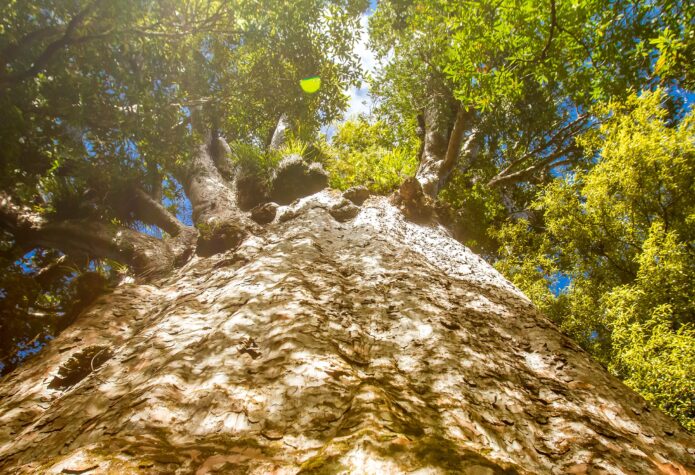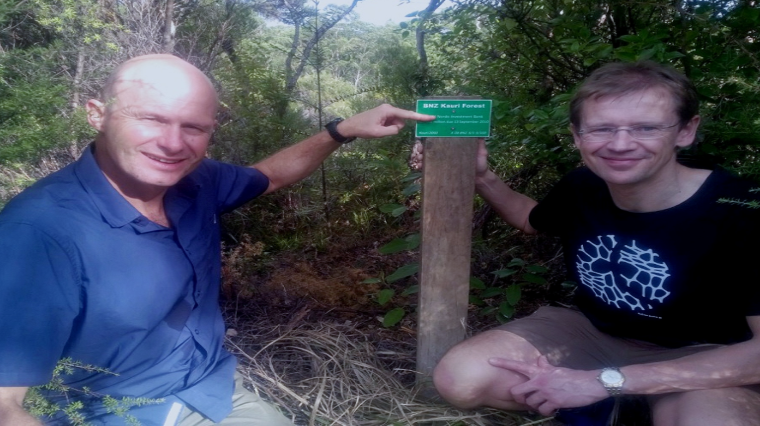NIB into Kauri: Issuing bonds and planting trees

When New Zealand’s Kauri bond market first emerged in 2007, lead manager Bank of New Zealand (BNZ) committed to planting 100 kauri trees for every transaction they arranged. Thanks to its issuance of bonds with BNZ, the Nordic Investment Bank is now part of the Kauri forest in the Coromandel Peninsula east of Auckland.
A Kauri bond is defined as a bond denominated in New Zealand dollars but issued by a foreign issuer. The market was named after New Zealand’s famous kauri trees.
Following an initiative started by BNZ and the Kauri 2000 Trust ten years ago, NIB has through its issuance of Kauri bonds facilitated the planting of a total of 600 kauri trees on North Island.
“When the trust was set up in 1999, the motivation was to mark the millennium, and do something that would last another thousand years”, explains Mike Faville, Head of Debt Capital Markets at BNZ.
“The intention behind linking bond arrangements to fostering kauri trees was to promote an understanding of the market and to do good at the same time”, Mike Faville says.
“BNZ is now responsible for 7,200 kauri trees on North Island.”
Jens Hellerup, Head of Funding and Investor Relations at NIB, who recently visited the park on the Coromandel Peninsula to see the kauris planted for NIB, agrees:
“BNZ has taken great initiative and enabled NIB to contribute indirectly to something positive for the environment, which is in line with NIB’s green mandate. After being to New Zealand several times and issuing Kauri bonds for 10 years, it was a great experience to finally see the trees.”
“The catalyst for the creation of the Kauri market in 2007 was a lack of supply of New Zealand government bonds, so the Reserve Bank of New Zealand decided to add bonds from international issuers with triple-A ratings to its repo-eligibility list”, explains Jens Hellerup.
“This was a precondition for local investment funds and banks that needed high-quality assets to fulfil their liquidity requirements.”
 |
After recovering from the global financial crisis and the Christchurch earthquakes, the sovereign has now become a more regular issuer again, but the Kauri market has proven to be well established.
The annual supply in the market is significantly higher than it was ten years ago.
Second largest
A total of 19 international issuers, mainly supranational and agency organisations, have been active in the Kauri market.
“NIB has played a significant role as well and according to KangaNews is now the second largest issuer of Kauri bonds. The Bank has been present with new bond offerings every year since the market’s inception”, says Jens Hellerup.
“In turn, the Kauri market has provided NIB with investor diversification over the last ten years”, Mr. Hellerup says. ”Our presence in the market allows us to reach out to new investors that would otherwise not necessarily be buying NIB’s bonds.”
Kauri bonds have provided around 10% of NIB’s outstanding funding, which is at the same level as funding raised in bigger markets, namely Australian dollars and pounds sterling. Only US dollars make up a larger share of NIB’s funding.
One of the reasons for NIB’s success in the Kauri market is the Bank’s high and stable credit rating.
“NIB’s funding team regularly visit investors in New Zealand. We value this market and want Kauri investors to stay abreast of the Bank’s lending activities and the economic performance of NIB’s member countries”, Mr. Hellerup explains.
“Although NIB has not yet issued Kauri bonds this year, we are looking forward to planting more trees soon.”